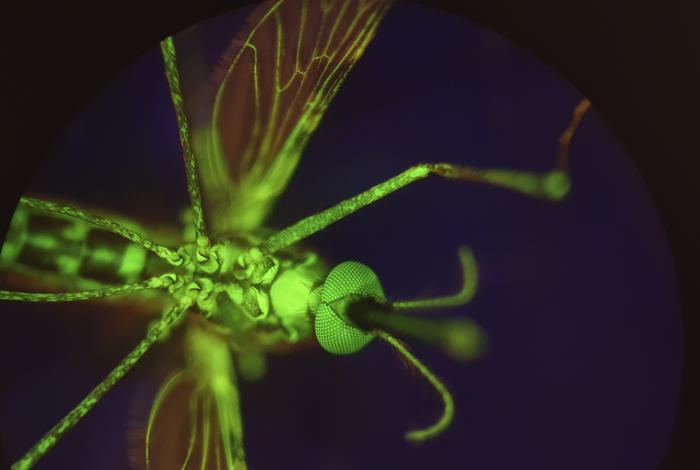In a groundbreaking study published in Science Translational Medicine, researchers have unveiled a novel approach in the battle against malaria, utilizing the drug nitisinone. This medication, typically prescribed for rare inherited disorders, has demonstrated the potential to render human blood toxic to mosquitoes, particularly the Anopheles gambiae species, which is notorious for transmitting malaria across Africa. This innovative strategy avoids the detrimental repercussions associated with traditional insecticides and provides an environmentally friendly alternative in the ongoing fight against malaria.
Malaria remains one of the leading causes of illness and death in many regions, particularly in sub-Saharan Africa. Conventional approaches to combating mosquito populations primarily include the use of harsh chemical insecticides, which, while effective, can lead to significant environmental damage and the development of insecticide resistance among mosquito populations. This alarming trend has necessitated the exploration of alternative methods to manage these pests and protect vulnerable populations from malaria infestations.
Ivermectin, an established antiparasitic medication used to treat various infections in humans and animals, is one such existing method. While it has been proven effective in reducing malaria transmission through the targeting of mosquitoes, there are pressing concerns regarding its environmental toxicity and the potential for developing resistance if the drug is overused. The risk of resistance among mosquitoes could compromise its effectiveness and further complicate malaria control efforts, making the search for new solutions imperative.
The inventive findings of this research suggest that nitisinone could provide a two-pronged benefit; not only might it assist in controlling malaria-transmitting mosquito populations, but it also presents a unique method of reducing reliance on traditional insecticides. By making blood toxic to these insects, nitisinone could dramatically reduce their lifespan and, consequently, their ability to spread malaria. Researchers have revealed that nitisinone affects the metabolic processes in mosquitoes in a way akin to its function in human bodies where it blocks a critical enzyme involved in metabolizing certain amino acids.
The mechanism of action is particularly fascinating. Nitisinone impedes the activity of the enzyme 4-hydroxyphenylpyruvate dioxygenase (HPPD), which is responsible for the breakdown of tyrosine, an amino acid vital for various biological functions. When mosquitoes feed on blood containing this drug, the mosquito’s ability to metabolize and digest their meal is compromised, leading to their swift demise. This novel approach introduces a method that specifically targets blood-feeding insects, rendering the medication a potential game-changer in vector control.
In their study, the researchers carried out extensive analyses to determine the dosages necessary for optimal mosquitocidal effects. They established that nitisinone outperformed ivermectin, showing greater efficacy in killing both susceptible and insecticide-resistant mosquito populations. This is particularly significant in regions where the resistance to traditional insecticides has become pervasive, thus diminishing those strategies’ effectiveness.
Furthermore, it was noted that nitisinone remains in the human bloodstream longer than ivermectin, meaning its mosquitocidal activity persists in the body for extended periods. The implications of this characteristic are crucial for its application in real-world scenarios, as it potentially enhances the drug’s effectiveness while also improving safety and cost-effectiveness.
Researchers from the University of Notre Dame and the Liverpool School of Tropical Medicine collaborated closely with the Robert Gregory National Alkaptonuria Centre to obtain human blood samples. By analyzing the blood of individuals treated with nitisinone, researchers confirmed that it possessed lethal qualities for mosquitoes, demonstrating a real-world application of laboratory findings. This collaboration underscores the importance of interdisciplinary research and the potential of repurposing existing medications for innovative uses.
This research promises to pave new pathways for malaria control strategies, especially in geographically isolated communities where access to traditional insecticides is limited. Notably, the use of nitisinone could provide a dual benefit by potentially increasing drug production capacity and decreasing costs for patients suffering from tyrosine metabolism disorders. The broader implications of this research extend beyond malaria control and may positively impact patients requiring nitisinone for their medical needs.
Although the findings are promising, further studies and field trials will be essential to establish optimal dosages and assess the long-term impacts of using nitisinone in various environmental contexts. Researchers are optimistic about transitioning to semi-field trials to examine how nitisinone affects mosquito populations under more realistic conditions. Such trials will help ensure that the findings of the current study can be effectively translated into practical applications in malaria-endemic regions.
The investigation has garnered significant attention from global health organizations and advocacy groups focused on malaria eradication. As enthusiasm builds surrounding nitisinone’s potential benefits, there is hope that the implementation of such innovative strategies can lead to sustainable control of malaria-bearing mosquito populations, ultimately saving countless lives.
Overall, the breakthrough description of nitisinone as a prospective tool in malaria control underscores the significance of continued research in finding novel solutions to combat infectious diseases. Given the looming threat of increasing resistance to current treatment methods, this discovery arrives at a crucial juncture in the global health landscape, where novel interventions are needed more than ever.
Efforts will certainly continue as researchers advance their objectives; they aim to solidify nitisinone’s role as a key player in malaria prevention. With ongoing support from various research councils and institutions worldwide, the medical field stands on the brink of potentially revolutionary changes in addressing the urgent challenges posed by malaria.
This innovative study not only exemplifies the convergence of pharmacological research with urgent public health needs but also serves as a reminder of the critical importance of continued investment in scientific exploration and discovery. As we move forward, the collaborative efforts of researchers, healthcare providers, and public health organizations will be paramount in reimagining strategies for effective malaria control in a changing world.
Subject of Research: Nitisinone’s effect on mosquito populations and malaria control.
Article Title: Nitisinone’s mosquitocidal properties hold promise for malaria control.
News Publication Date: 26-Mar-2025.
Web References: Science Translational Medicine.
References: (Not provided within the given context).
Image Credits: Provided by Lee R. Haines.
Keywords: Malaria, Nitisinone, Mosquito control, Ivermectin, Vector control strategies, Environmental safety, Infectious disease transmission, Anopheles gambiae, Pharmacology, Public health initiatives.
Tags: alternative malaria prevention strategiesAnopheles gambiae controlantiparasitic medication alternativesenvironmentally friendly insecticideshuman blood mosquito toxicityinnovative approaches to pest managementinsecticide resistance solutionsmosquito repellent breakthroughnitisinone malaria treatmentreducing malaria transmission methodsScience Translational Medicine studysub-Saharan Africa malaria impact





